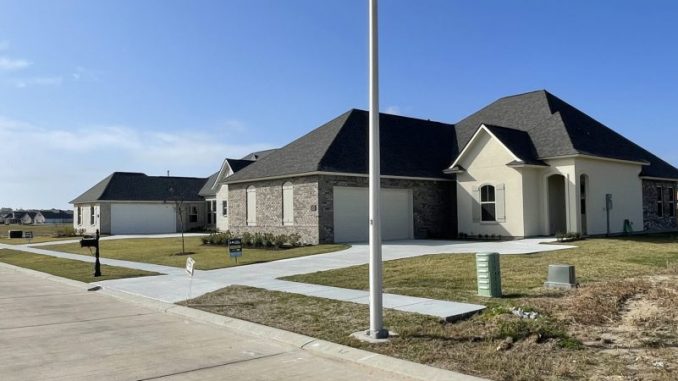
Recent data disclosed earlier this month by the St. Charles Parish Tax Assessor’s office, which tracks the number of residential homes completed each year inside the parish, reveals a somewhat predictable four-year downward slide in new residential construction following the one-two punch of Hurricane Ida and the pandemic.
In a Herald Guide interview last week, St. Charles Parish Tax Assessor Tab Troxler said 2023, based on current year-to-date numbers, will likely finish somewhere around 86 new homes completed in the parish for the year, which come on the heels of 2022’s 132 completed homes and 2021’s 126 completed homes figures.
The projected 2023 number of 86 completed homes stands at just 55% of the parish’s 10-year peak of 155 new homes completed in 2019, a clear signal new residential construction in St. Charles Parish has slowed considerably in recent years.
St. Charles Parish’s home completion trends stand in stark contrast to the latest national housing completion data released by the United States Census Bureau last month, which indicates new housing completions experienced slight growth in the U.S. for the last three years. In October 2023, the U.S. had around 4.6 percent higher home completions year over year – following a marginal 1.5 percent rise between 2020 and 2022.
While the parish’s recent completion numbers seem to be indicative of an increasingly sluggish local real estate market, residential completion figures alone, the assessor warned, don’t give an accurate picture of St. Charles Parish’s overall economic health, which still looks healthy when considering the challenges faced in recent years.
“[Homebuilders aren’t building] as much, but [parish] revenues are up 40%, and tax rates are down,” Troxler said. “I’m not saying …that things are booming, but considering the fact that we went through a hurricane, a pandemic, and all of the headwinds of the real estate market, we’re weathering the storm.”
St. Charles Parish’s Districts I, II and III have in recent years driven much of St. Charles Parish’s new residential construction growth, given the parish’s stock of new residential lots have typically come from those districts. Troxler mentioned the trend in lower new residential construction in those districts and in other areas of St. Charles Parish could be explained in part to several factors including a prior moratorium on new residential construction while parish officials studied drainage and flooding concerns, which affected the completion timeline of several local residential development projects.
Other major factors that appear to have contributed to St. Charles Parish’s new residential construction slowdown include Louisiana’s continued homeowners and flood insurance woes, increased labor and building material costs following Hurricane Ida, along with interest rate hikes.
Parish tax data tells a much different story, Troxler said, when comparing St. Charles Parish’s economic health to the health of other neighboring parishes in the region.
“It’s night and day – we’re so far ahead of [other like-sized or neighboring parishes], but it has absolutely nothing to do with new residential construction,” Troxler said.
Because St. Charles Parish derives a greater portion of its annual revenue from industrial and commercial concerns, Troxler explained, a drop in incoming new residential construction has had little effect on the parish’s economic strength as it might with other parishes.
“Losing 40 or 50 homes doesn’t have the impact on the tax roll here that it may have in other parishes,” Troxler said. “Losing industrial value or losing industrial properties – that has a much greater significance.”




Be the first to comment